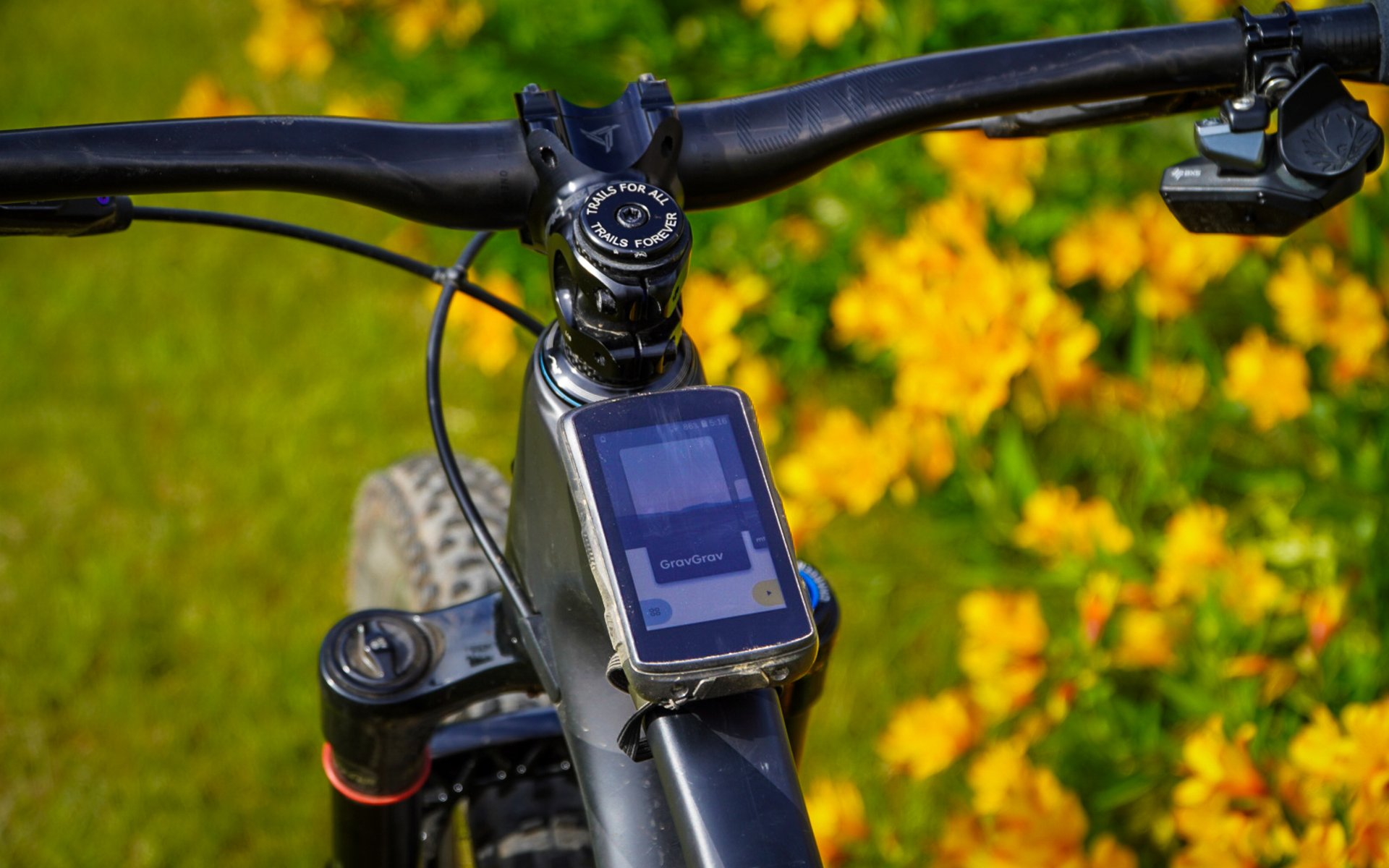
Review
Hammerhead Karoo 2
I’ve generally seen computers as unnecessary for mountain biking, however my foray into drop bar racing at the BCBR Gravel Explorer had me looking for something with a few more features like navigation (read about that in four parts: 1, 2, 3, 4). While basic GPS recorders with LCD screens are nothing new, modern high-end cyclocomputers like the Hammerhead Karoo 2 offer a suite of features that would have been unimaginable not that many years ago and hint at – for better or worse – levels of future integration you may either find terribly exciting or terrifying. They also often in at suitably-modern eye-watering prices. The Karoo 2 however, bucks this trend at 579 CAD (and it's currently on sale for 375 CAD), nearly 40% less than the feature-comparable Garmin Edge 1040.
As is tradition with everything computer-y, my original concept was to compare the Karoo 2 to some old space contraption. I figured using Apollo was tired and this unit is so many orders of magnitude smaller and more powerful, it wasn’t illuminating, so I’d pick something else like Sojourner or everyone’s favorite, plucky Opportunity & Spirit.
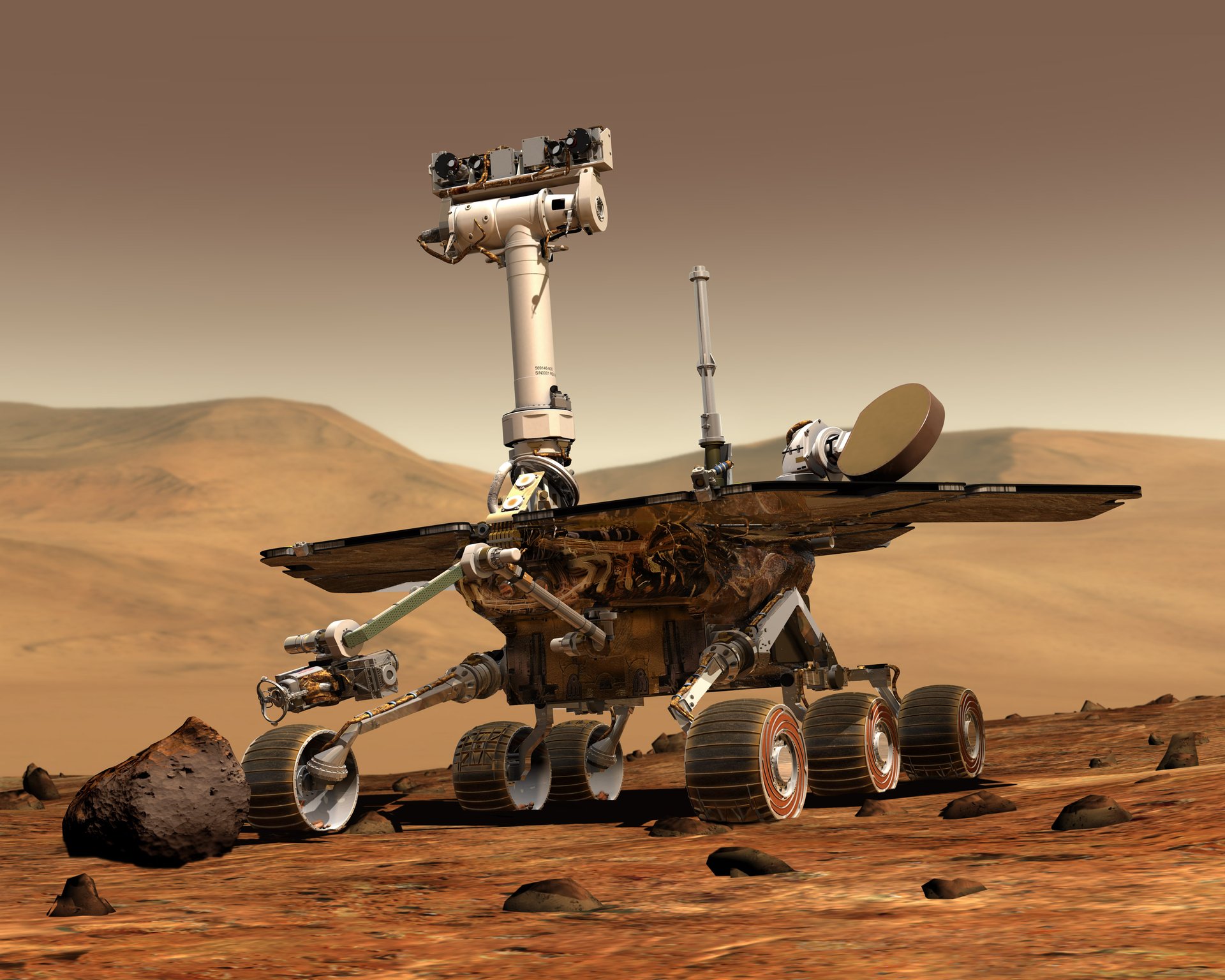
While NASA's Spirit and Oppy captured the world's imagination for a year, the Karoo 2 is much more powerful. For whatever its worth, the Karoo 2 even has a more powerful computer than Perseverance, which landed on Mars in 2021 and is a comparably 'new' space contraption.
Image: NASA/JPL/Cornell University, Maas Digital LLC - http://photojournal.jpl.nasa.gov/catalog/PIA04413
But let’s skip that comparison, too. The important part is this: modern cycling computers like this one have more in common with cell phones than anything else. From processors and storage to colour touch screens, they’re similar in many ways. The Karoo 2 has 32GB of storage, a 3.2" colour touchscreen, and runs Android underneath the custom UI. This will not be a detailed technical breakdown of the Karoo 2, it's just my account of some of its strong points and weaknesses and a comments section about how none of you want computers connecting everything on your bikes. If you’re keen on technical details, head over to DC Rainmaker where you can learn more than you’ll ever want to know about what’s under the hood, or see how it stacks up against the aforementioned Garmin Edge 1040 here (favourably).
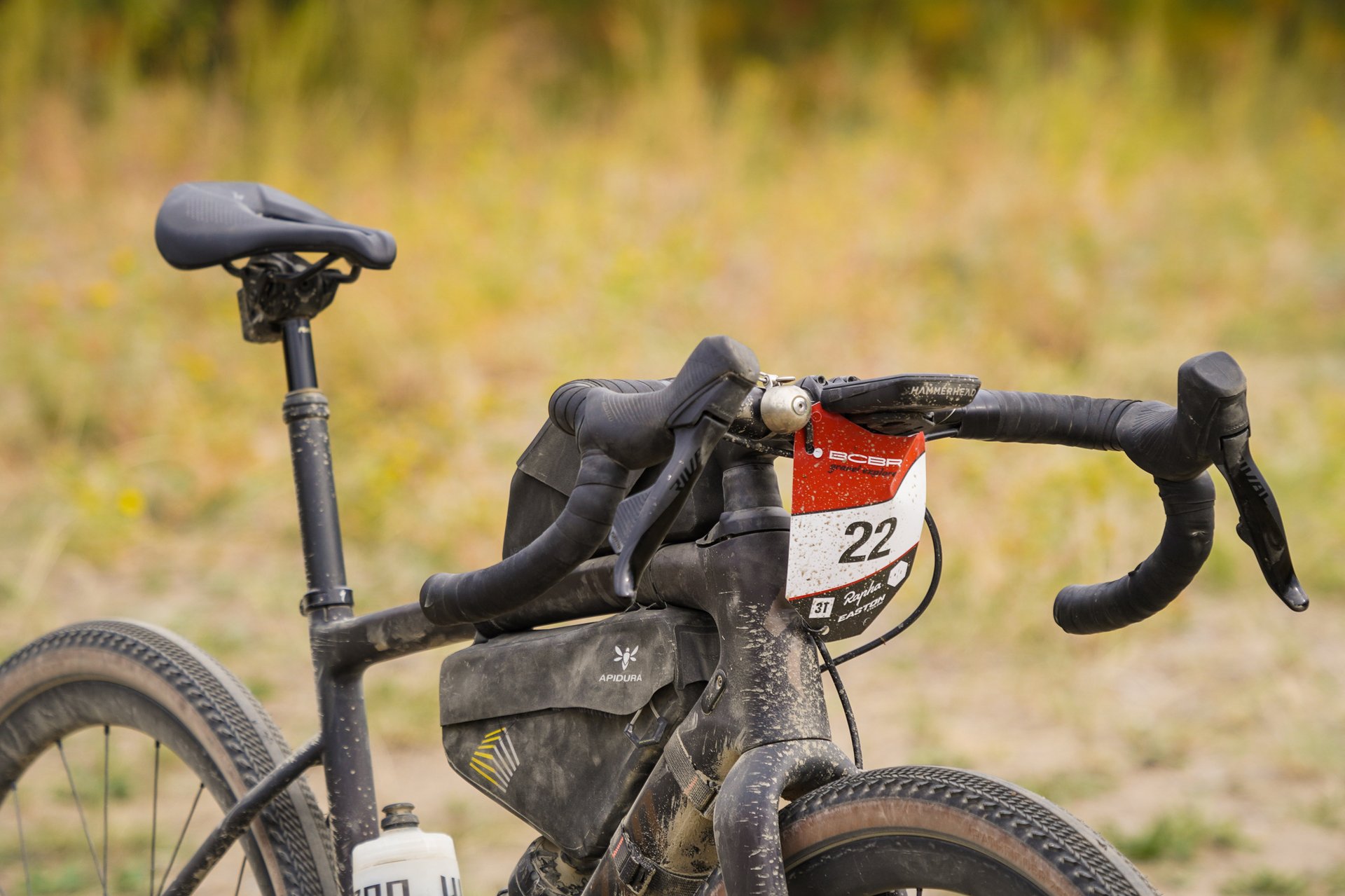
The Karoo 2 has spent time on half a dozen or more bicycles, however its initial purpose was to help me race this Specialized Diverge Expert Carbon, reviewed here.
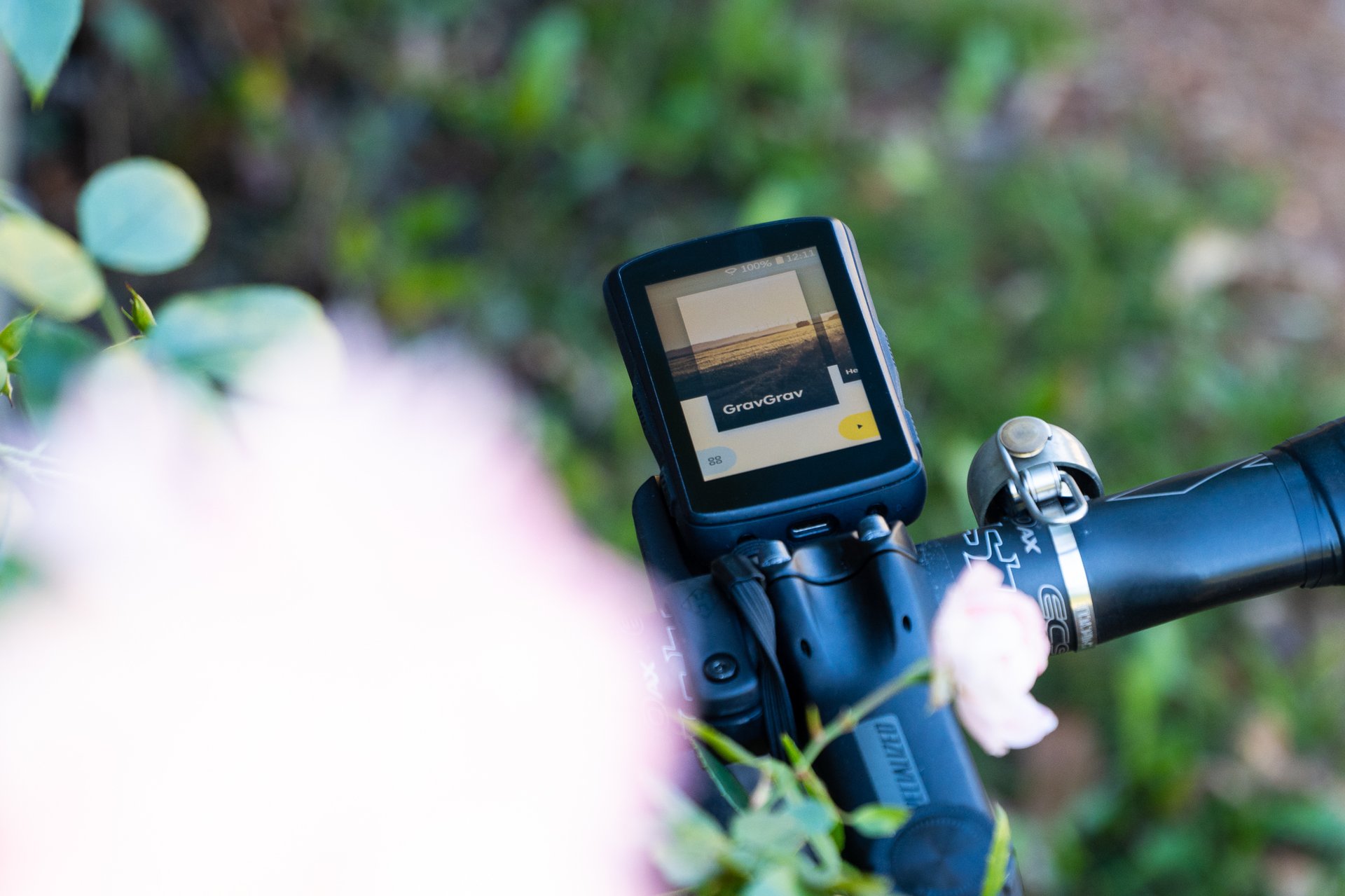
It spent the majority of its time attached to drop bars but I've been using it more and more on mountain bikes lately.
Hardware
There are a few key hardware points worth talking about, though. Karoo 2 comes in a compact, well-designed origami box that indicates people thought about the user, and this is a trend that continues throughout the product experience. Everything you need for install in included: computer, handlebar mount, safety lanyard, and an adapter to attach the unit to standard quarter turn-style mount.
The last piece is necessary as Hammerhead has their own proprietary mounting system which is completely different than the ubiquitous quarter turn mounts popularized by Garmin. While the Hammerhead mount feels more secure, I’m left wishing they’d just used the more standard mount (I’m assuming there are patents involved here, and that’s why they haven’t). For compatibility and lack of aftermarket Hammerhead-style mounts, I utilize the adapter almost exclusively.
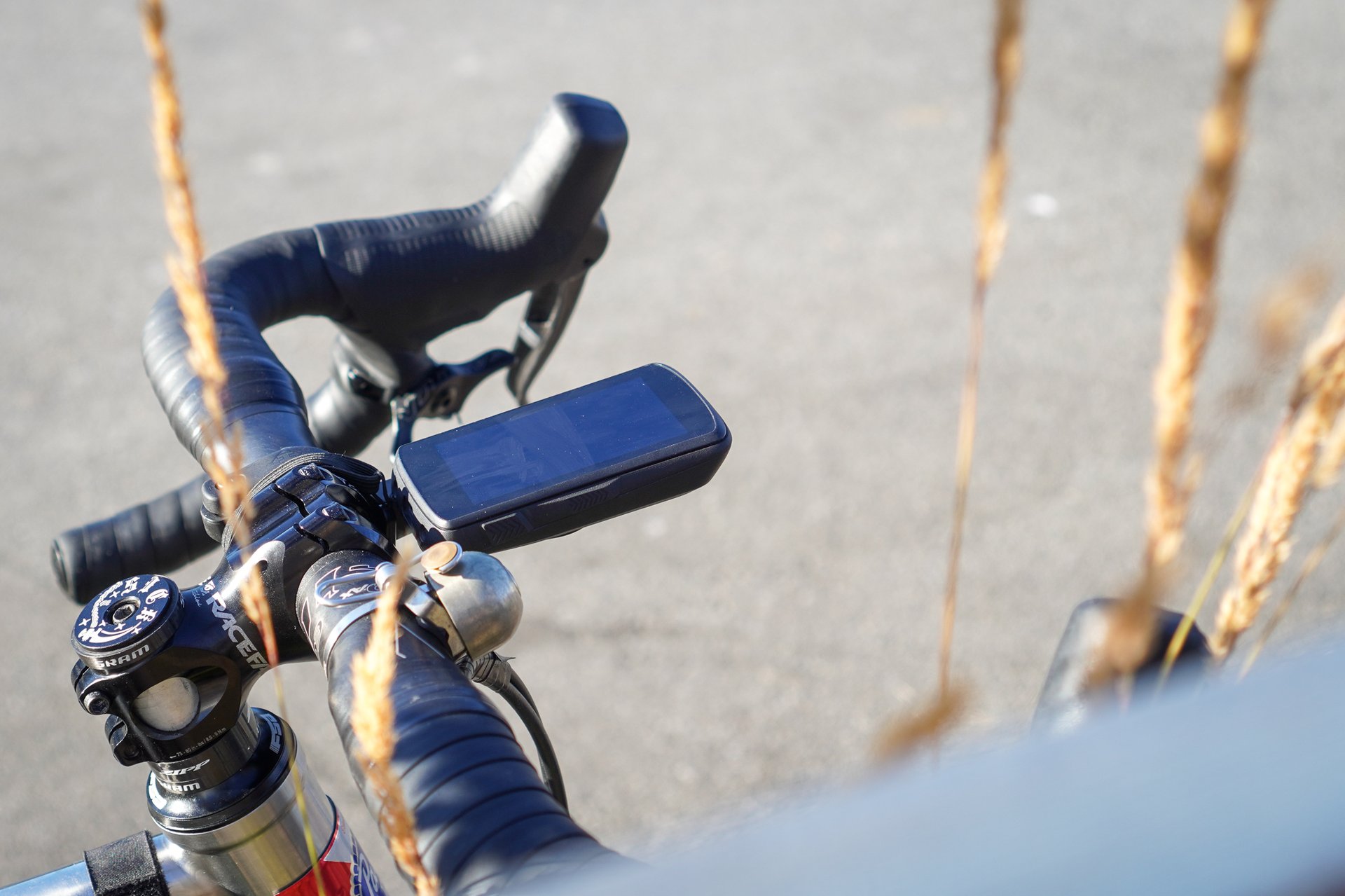
The stock Hammerhead mount and bracket works well - I eventually swapped it out for a K-Edge mount that also has a light bracket underneath to keep my cockpit cleaner.
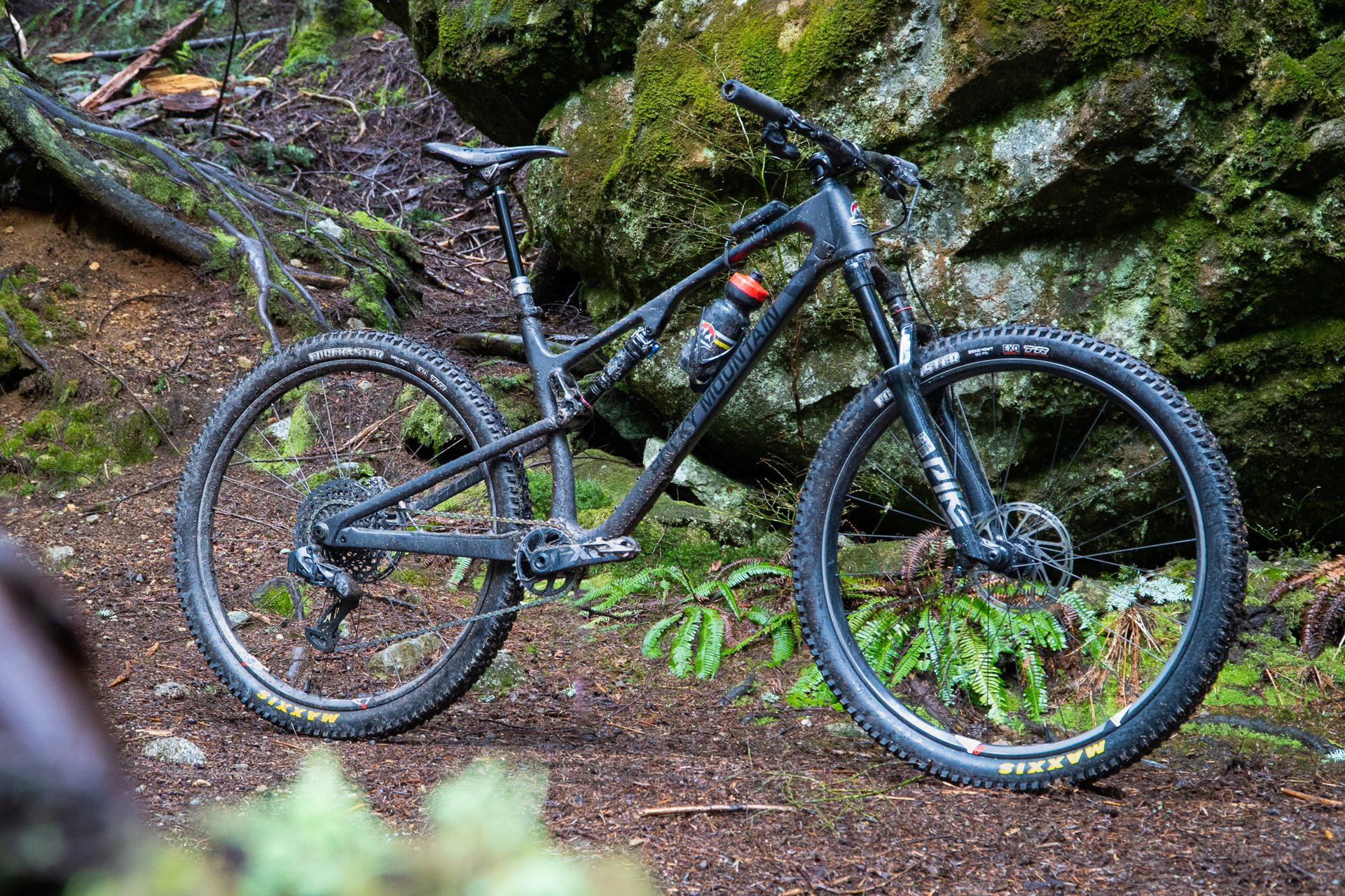
I use a 3D printed 76 Projects Enduro Mount to put the device up front on my Rocky Mountain Element.
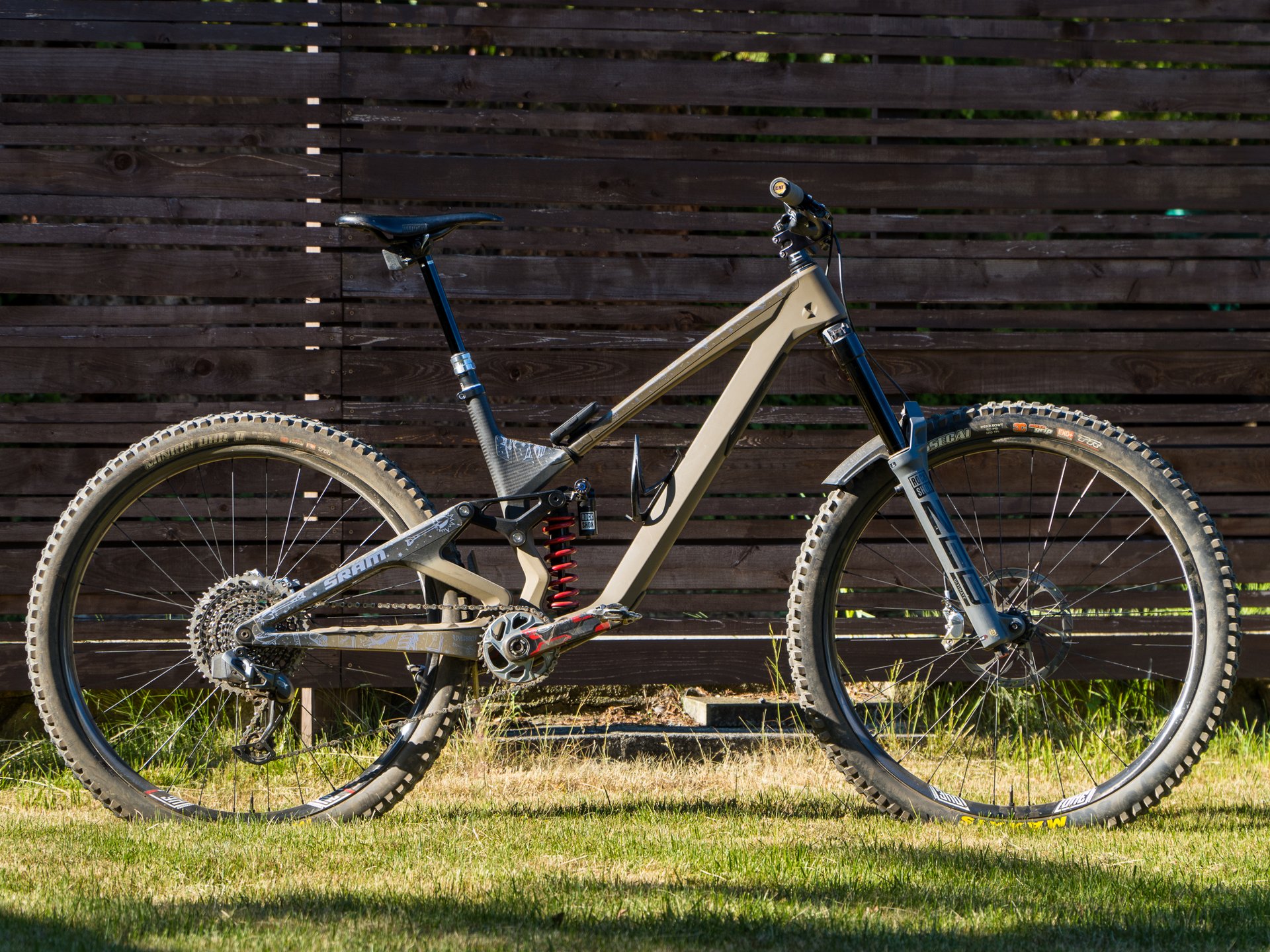
On my We Are One Composites Arrival 170, it sits farther back, on an identical mount.
Looking back at my initial notes from when I received the Karoo 2, I thought I’d lose the small rubber used plug to seal the USB-C charge port. A few months into the review period they released a new rear bezel with an attached plug that was an incredibly easy swap (they even include the tiny torx wrench required). New units ship with this plug and current owners can pick one up off the website. Like the choreographed reverse origami unboxing, this was another harbinger for how the company operates; both software and hardware see constant improvements and running changes. If you want, you can also customize the whole bezel with several different colors.
Software
After unboxing and installation, the primary contact users have with any device like this is through software. And much like a new cell phone, it takes some getting used to. Primary navigation is through the touch screen, although there are four hard buttons on the side you can use to navigate if you’re on a bumpy gravel road in the middle of a race, or if you’ve locked the capacitive touch screen in severe weather. You can set different profiles for different types of rides (I have a gravel setup and a mountain biking setup, but there's also plenty of indoor and training options) to display all the information you could ever possibly want.
You can pair with up to eight sensors at a time, including heart rate monitors, power meters, TireWiz, AXS components, and various radar systems - these sensors are also customizable in each profile. If you want to see nothing but what gear your AXS derailleur is in and your heartrate, go for it. If you want VAM, instant power, 3 second power average, 5 second average speed, and a lap counter all displayed on top of a map for navigation, you’re in luck. Want to chase Strava KOMs and PRs? If you’re a Strava Premium subscriber, you can chase your ghost and see that information in real time, too.
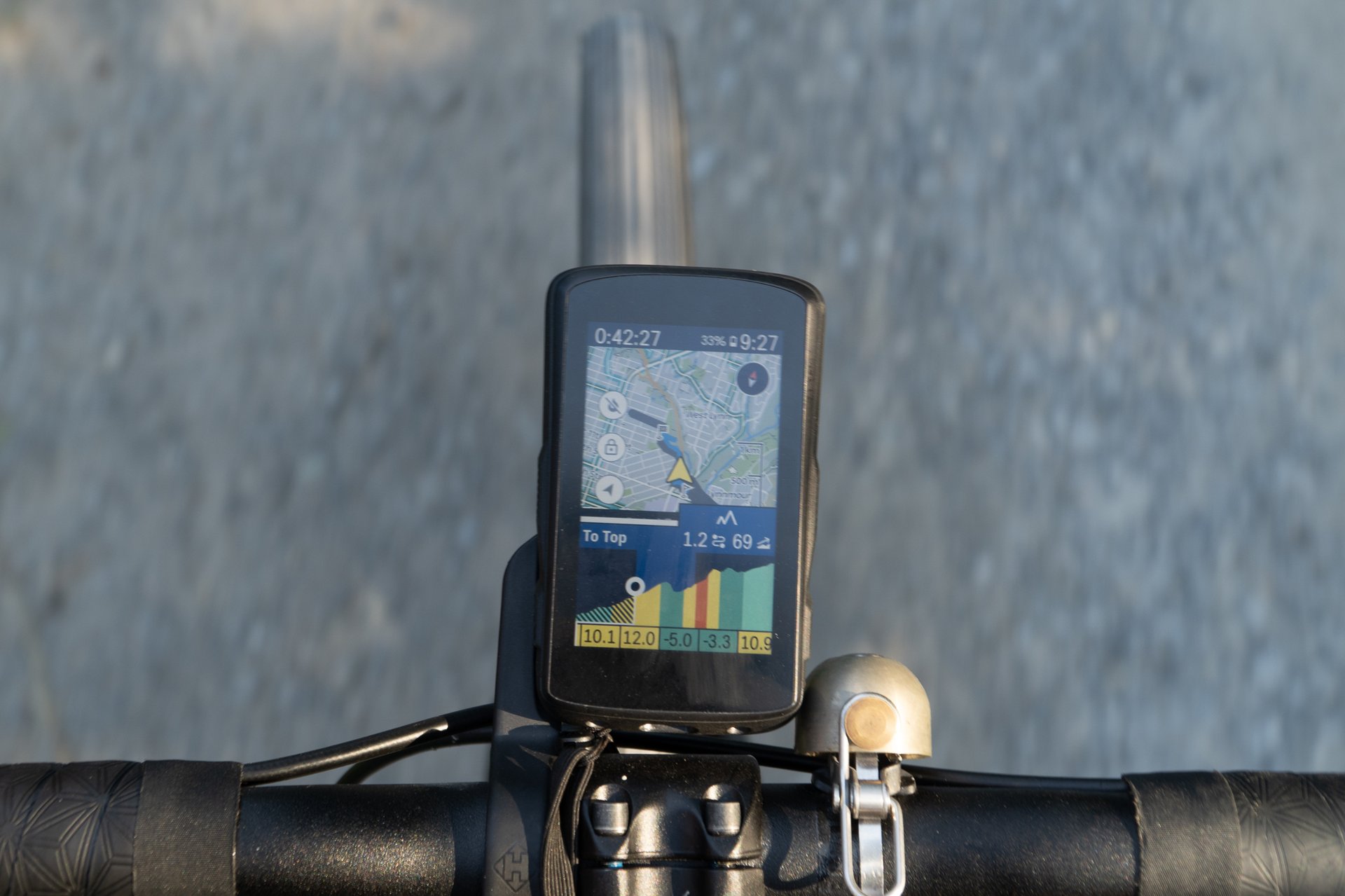
One of the neater "this thing is from the future" features is how it auto-detects upcoming hills even with no route loaded. Distance, grade, and elevation profile are all displayed. It doesn't always get it right; in this case it consistently selects a weird trail off to the side (down a big ravine), instead of the main gravel path.
Navigation is one of the big reasons I initially wanted to get a computer. While most of my mountain bike riding doesn’t involve routing, I find a map sitting on your handlebars can be very helpful on drop bars, and the Karoo 2 excels here. There are many ways to do routing, whether through a web browser, importing GPX files directly, or my preferred method of linking to a Suunto account, where I find mapping more intuitive than the Hammerhead Dashboard. You can also navigate directly to a point on the map mid-ride, load a different route, and it'll auto-adjust based on your preferred surface type if you go off.
The carryover feature from hardware to software is that just like the running change to the USB-C port, there are consistent software updates. Not just stability updates either - the team at Hammerhead is consistently adding features and options. The GUI was updated just last week.
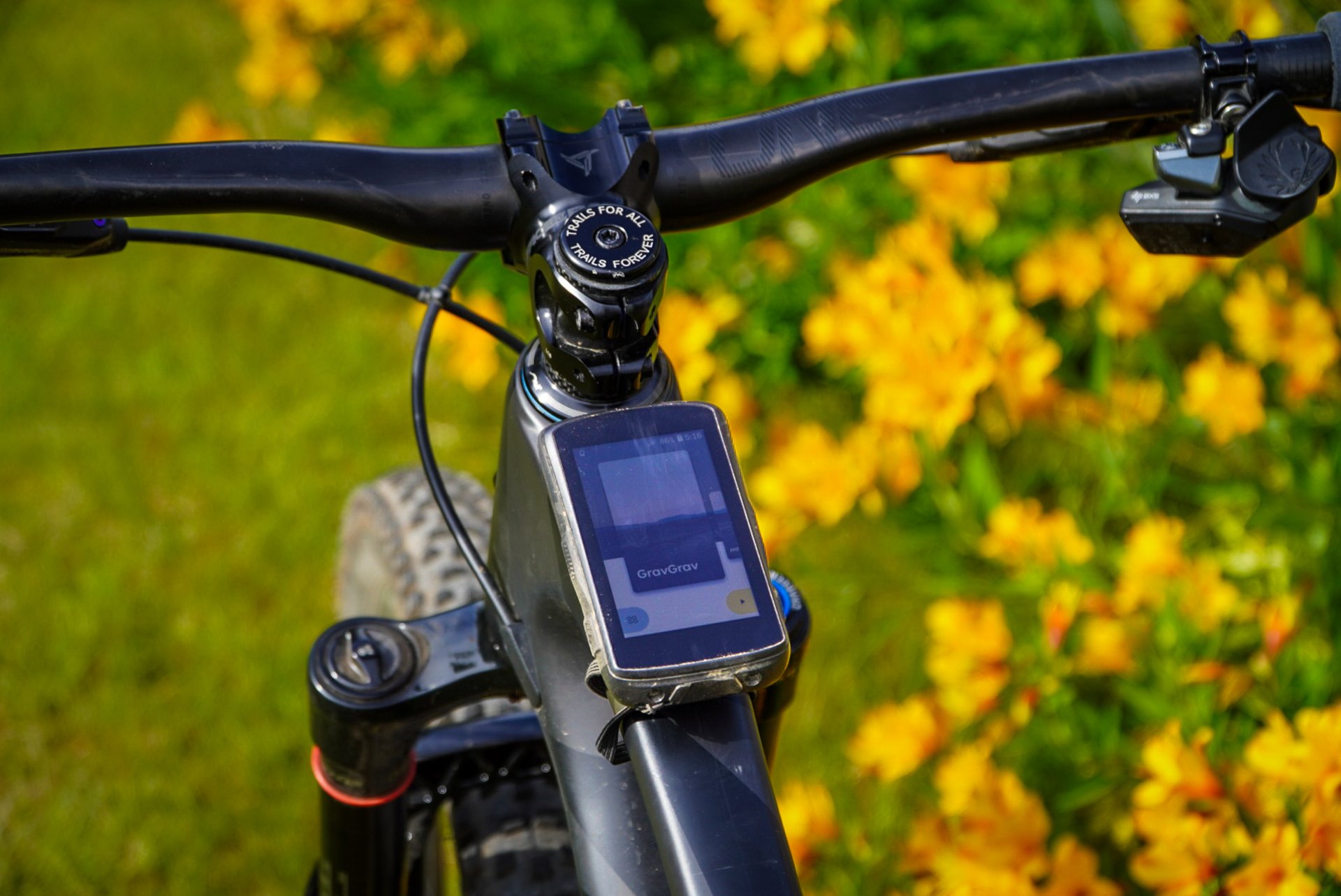
On my Element, rides are longer, often involve more complex routing, and I'm out there to suffer. The screen sits up front.
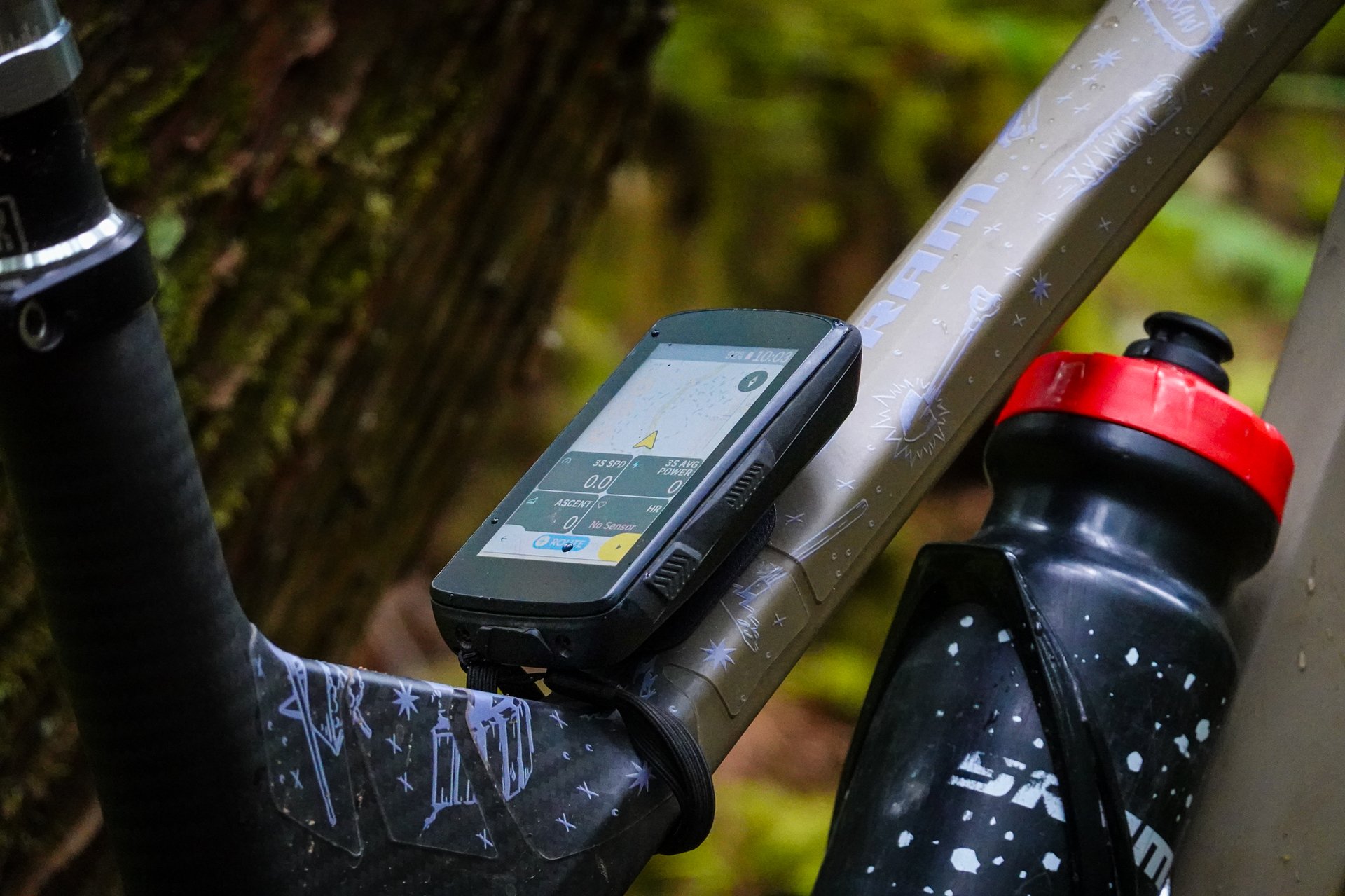
I don't utilize the information display that often while on my Arrival 170, so it sits down between my legs out of harm's way.
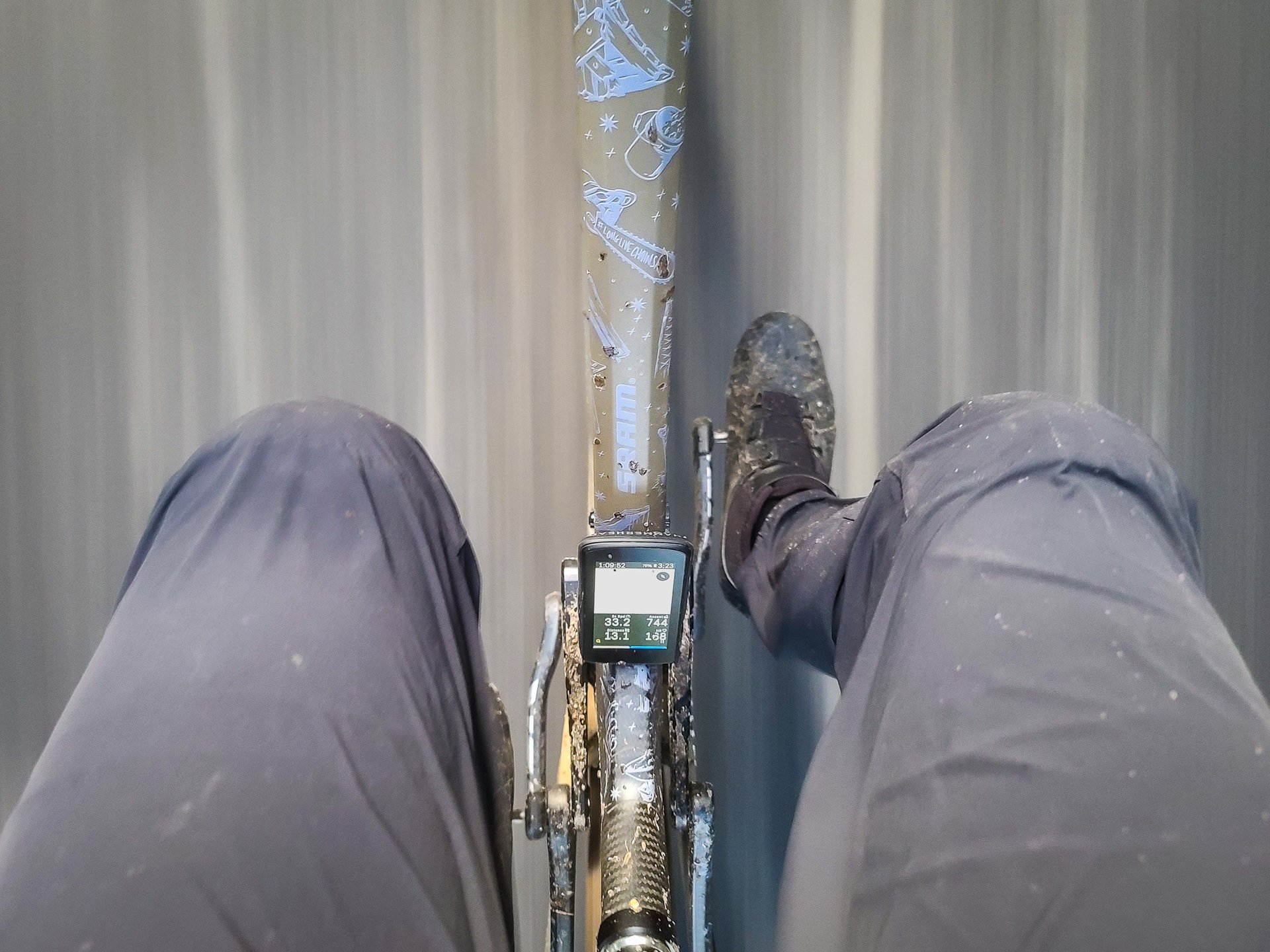
I can still see anything I might need to, but truthfully the screen is usually off and it's just a ride recorder on this bike. As an aside, I love the art on this DYEDBRO wrap by local street legend and artist Nigel Quarless.
Overall User Experience
I’ve gotten used to and comfortable with the Karoo 2, figured out what information I want to see or have available, and what I don’t. Most of the time on drop bars, I’ve got a map screen with a couple other pieces of information on screen. In unfamiliar areas, having a map with trails on screen is useful; the ability to display Suunto heatmaps on top can be invaluable if you’re unsure of the ‘best’ route. I now find myself with a Karoo 2 on my mountain bikes, although differently. I want different information (or almost no information) during the ride, and while the generous screen is advantageous for gravel navigation it's a bit bulky for mountain biking.
It’s a full-featured device which means setup can take a little while, and it takes a bit of time to figure everything out (like the first time I accidentally locked out the touch screen, a feature intended for use in the rain, although I never really had issues with the screen in the rain), but I think users looking for a device with all the features offered by the Karoo 2 will be willing to go through this process. The biggest drawback to the Karoo 2 is its limited battery life if you’re someone who likes monster rides, Hammerhead claims 12 hours, but rides in the double digits may require a bit of screen time management.
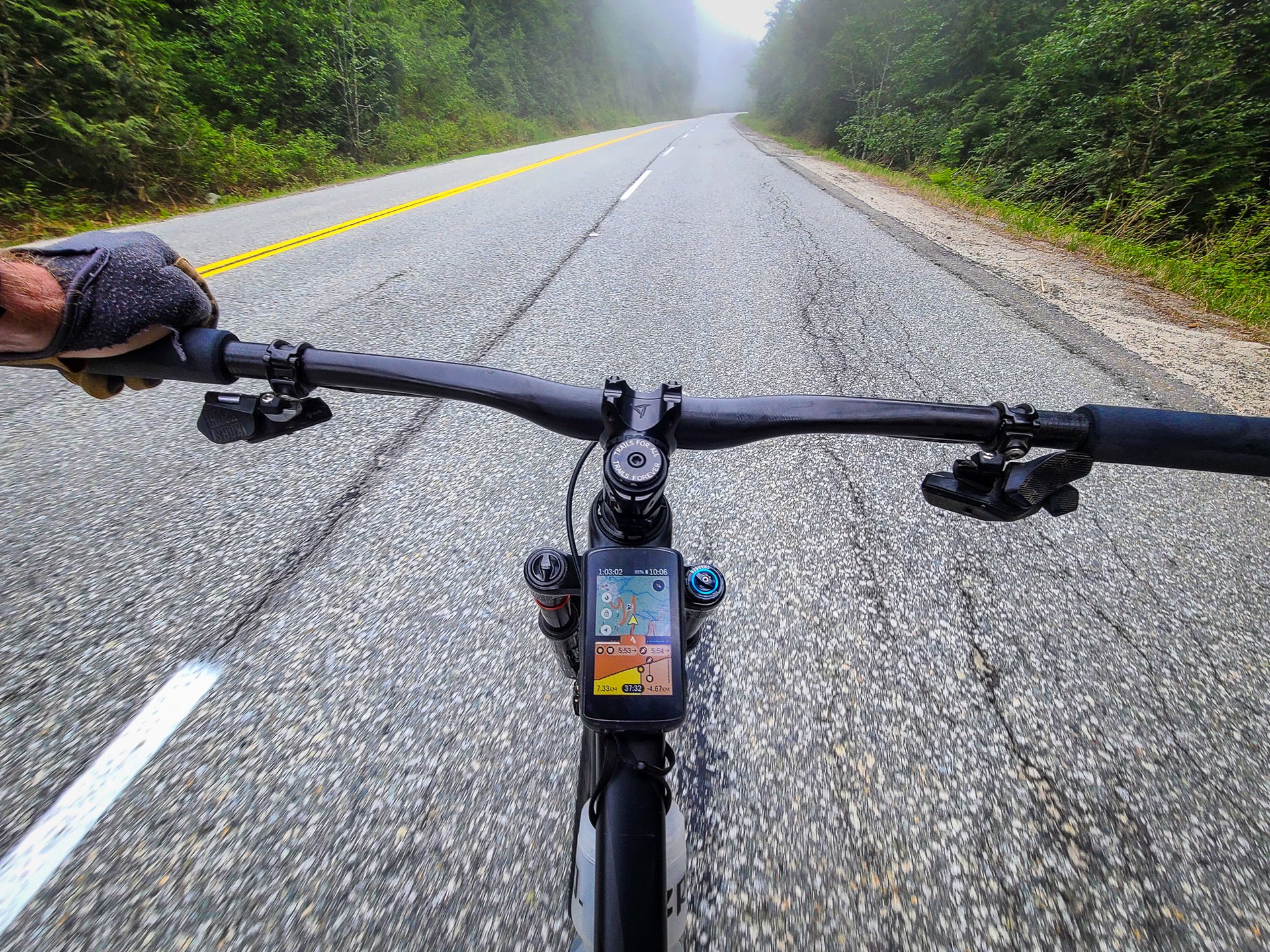
I had a short Strava Premium trial subscription, and you can see where you're at on starred segments compared to your PR, and the KOM. It's a great way to suffer if that's your jam, and a window into how many features the Karoo 2 has.
My other nit is the lack of connectivity. While the Karoo 2 is equipped with a SIM card slot and connects to your phone via a companion app for notifications on the fly (should you want them) the device needs to connect directly to WiFi for ride uploading or route sync.
There is a limited number of cyclocomputers out there offering this many features and hardware this nice. While you can do better on battery life, I’m not sure you can get the same features anywhere near this price point. If you’re training, racing, or just generally someone who is a bit nerdy like me and wants to see more than your track and speed, I’d recommend putting the Hammerhead Karoo 2 on your short list. Go snag one while they're on sale.
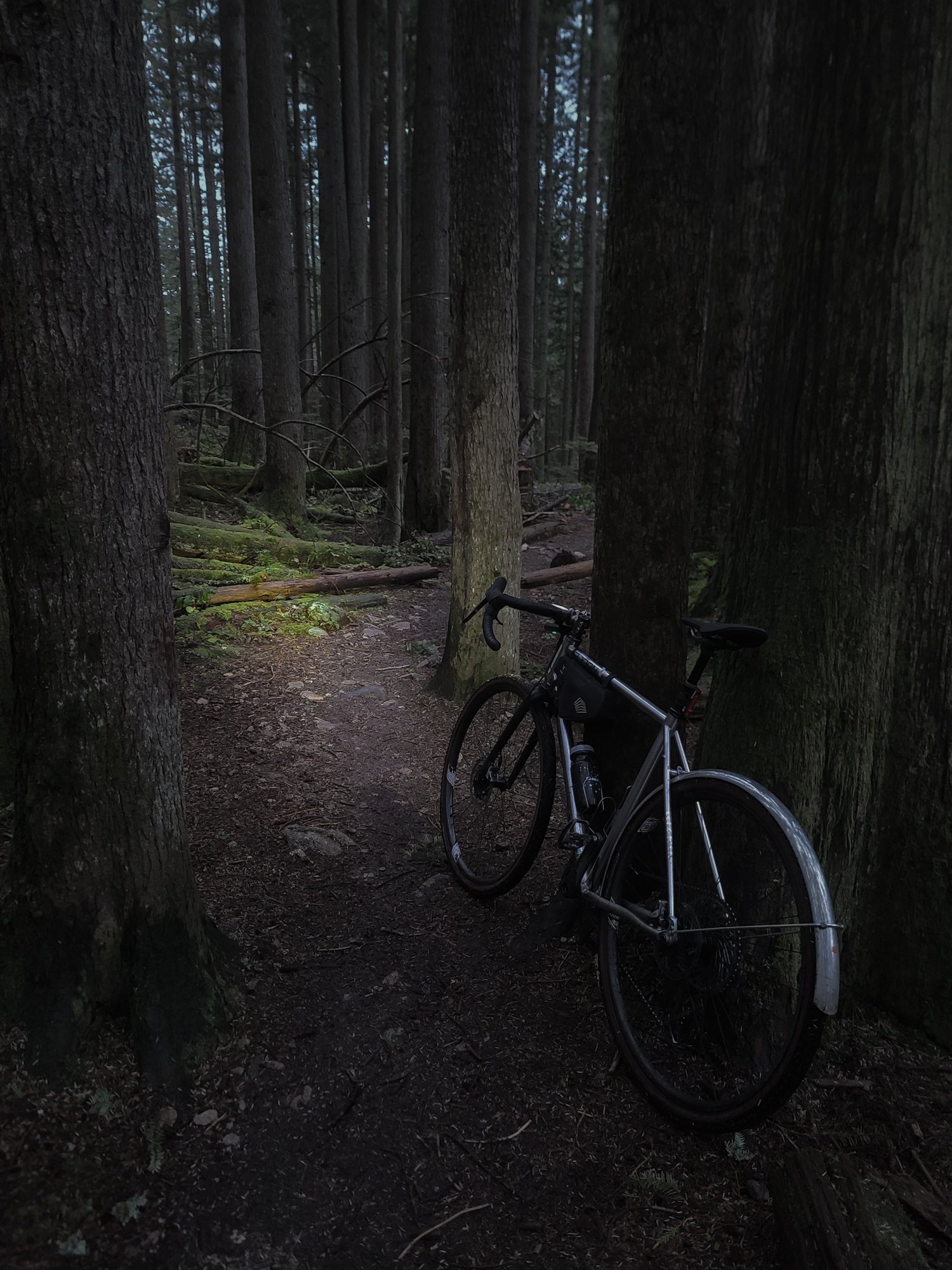
Four seasons of drop bars. Spring.
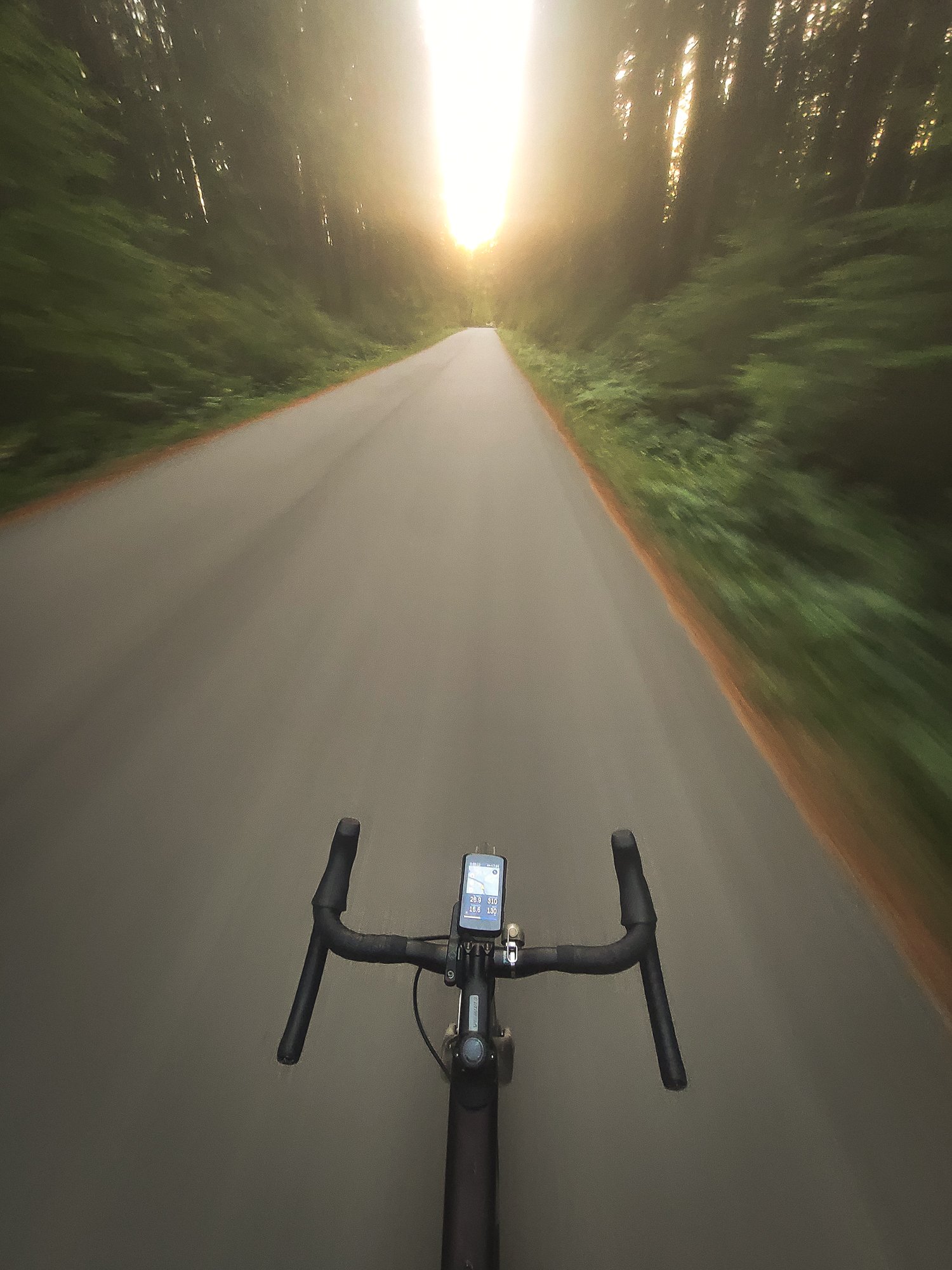
Summer.
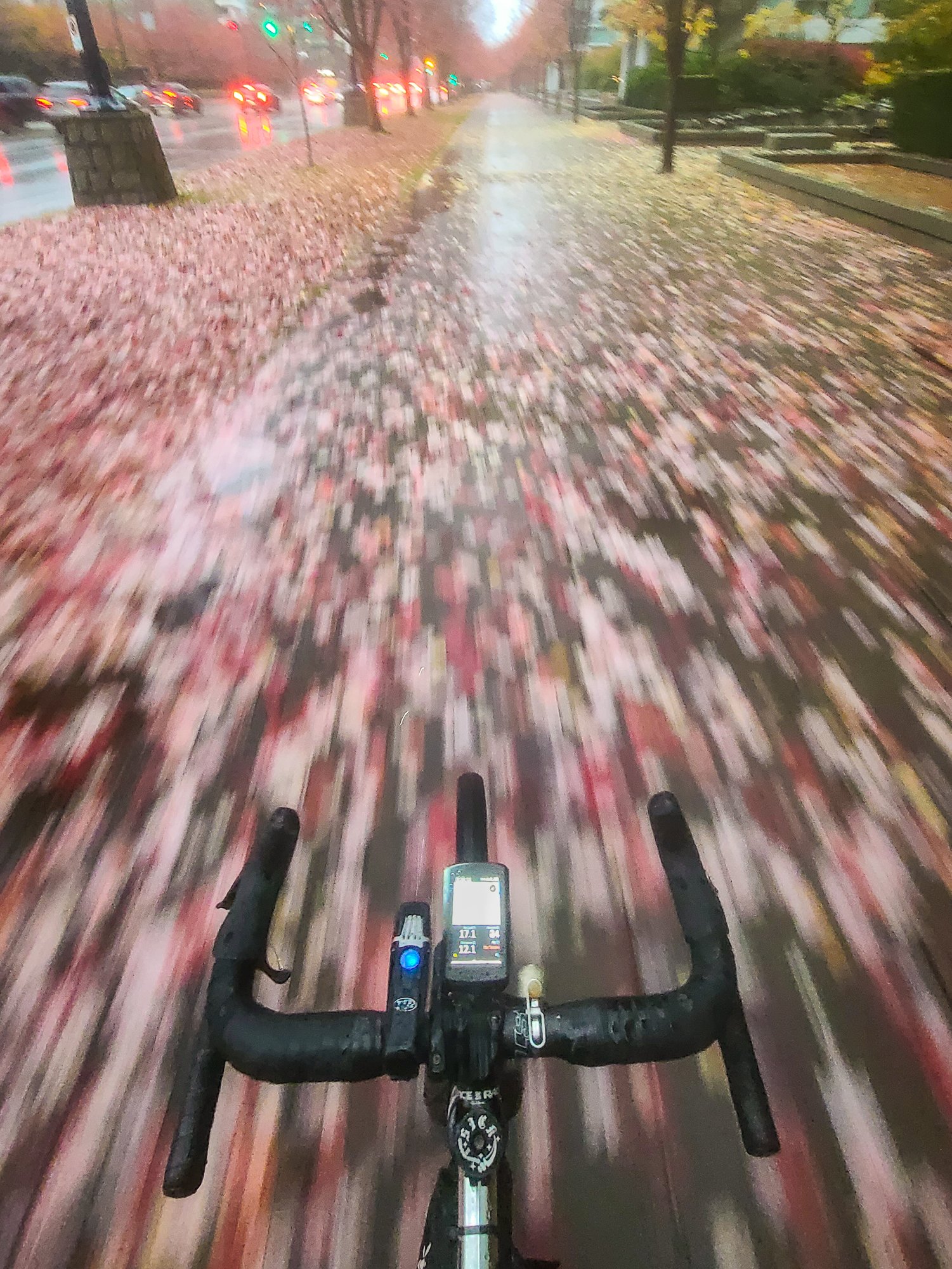
Fall.
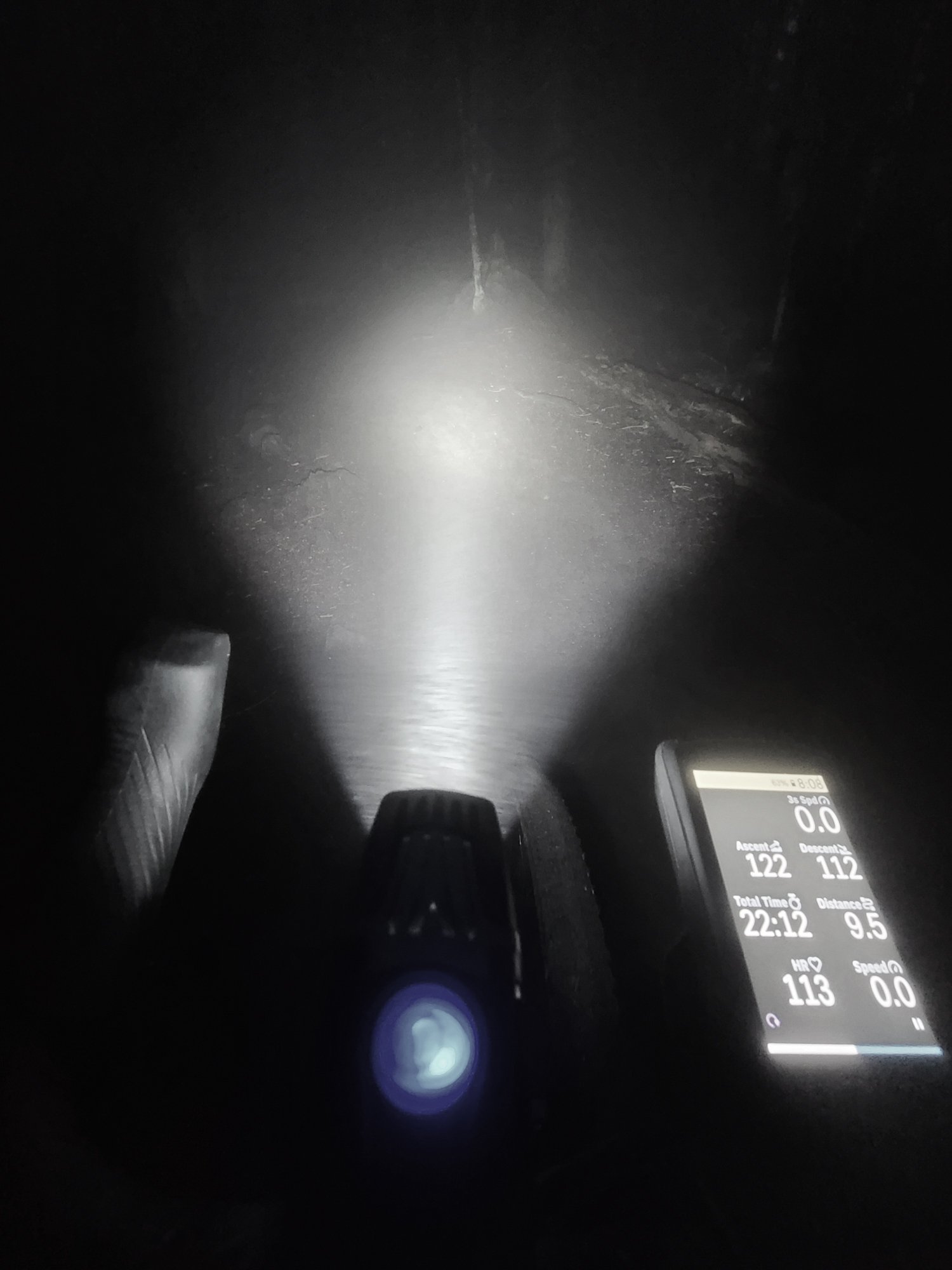
Vancouver winter.
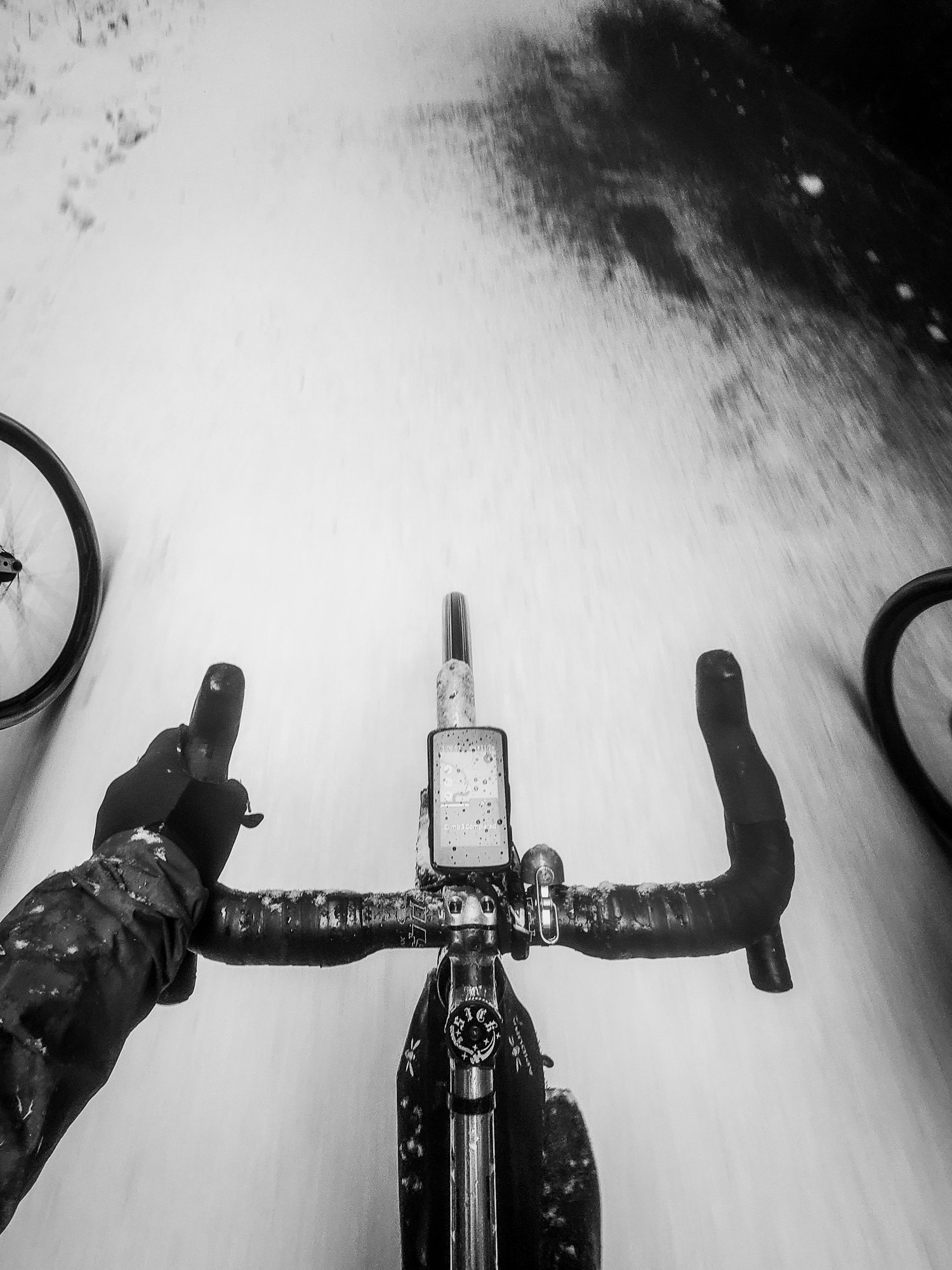
Christmas.
Postscript
Do I want to live in a world where everything to do with my derailleur, suspension, and tire pressure is being monitored, analyzed, and potentially controlled by a central computing node? That’s a question worth considering. I mean, maybe it’d be nice for a reminder that my suspension needs service, or that I was consistently in gears indicating I’d be better served by a different size chainring, but neither is adding to the experience of cycling. Does my fork need to know if my seatpost is up or down?
There’s been plenty of ink spilled about the increasing digitization of our analog bicycles, and while I’d love to believe the marketing conviction that it’ll improve our collective experience on the trails, the reality is it probably won’t. There are aspects of a device like the Karoo 2 that do augment cycling for me; but I also think it's a small peephole to peer through, and see where at least one brand thinks we're headed: SRAM purchased Hammerhead in 2022. A bike with a Hammerhead, Quarq (also owned by SRAM) powermeter, and an AXS derailleur seems like it's a wheel-speed sensor and some programming away from something like Shimano’s (currently) ebike-only Auto-Shift, but "smarter" as it could connect to RockShox's Flight Attendant suspension and an AXS seatpost. They're not alone: Fox holds a patent connecting your dropper post to your heart rate.
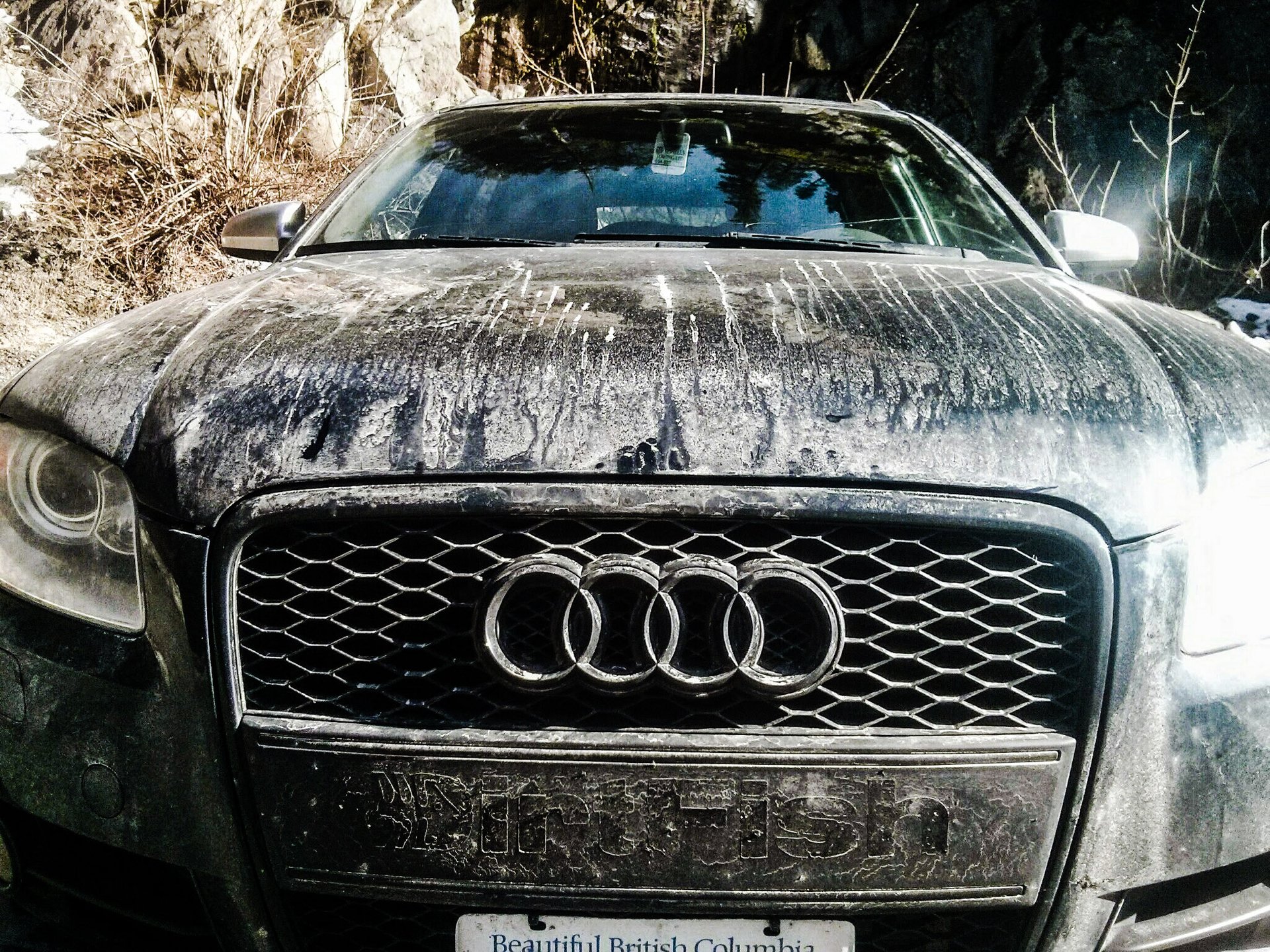
What's the point in owning a fast car if you keep it tucked away in a clean garage? I owned this to drive it, and the experiences like Tumwater Canyon just outside Leavenworth, WA were vastly improved by having less automation.
I'll draw an analogy for my feelings. My last fast car was a 2008 Audi S4 Avant, with six speed manual, 344 horsepower naturally aspirated V8 under the hood, and traction control that was ON or OFF. There’s no denying that modern cars with flappy paddles, two pedals, and 17 driving modes are faster. I also won’t argue that a standard automatic transmission is better for most driving; puttering around town or on the highway. But there’s something about being in control, being allowed to make mistakes, heel-toe braking into corners, and the very visceral experience of being absolutely in control (or not) of your path that I’ll always miss about that car.




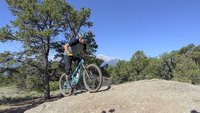
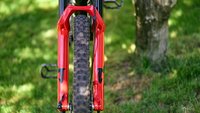

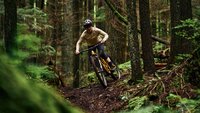
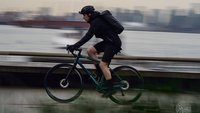

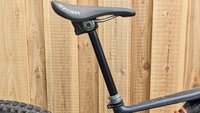
Comments
Andrew Major
11 months, 3 weeks ago
Just for some perspective. $579 works out to 154 tall cans of delicious La Cerveceria Astilleros El Valle Salado Salted Lime Lager.
So, folks with the necessary pocket change could buy one of these computer systems for themselves, and in doing so send the message - vote with their wallet - to SRAM that they’re all in on the ever increasing automation of the mountain bicycle…
OR, they could save all the setup hassles, plus remembering to charge the thing, plus then buying the inevitable upgraded version next year (next month?) and instead gift one amazing can of the flavour of summer to their favourite 154 people!
Cheers!!!
Reply
Cooper Quinn
11 months, 3 weeks ago
I don't have 154 friends! Or 54. Or maybe even 15?
Reply
Andrew Major
11 months, 3 weeks ago
10 friends get 15 delicious cans of salted lime luxury and you keep a four pack for yourself?!
Math it out how you want Cooper. A $579 investment in Bicycle-Skynet or craft beer for your friend(s)… It’s your choice.
Reply
Cooper Quinn
11 months, 3 weeks ago
This is a clever ruse to try and get me to buy you 154 beers, but I can see through it.
Reply
Andrew Major
11 months, 3 weeks ago
Hey now, I’ll split them with you!
We can sit around waxing poetic about how nice it was to go out and get (a little bit) lost in the woods not that long ago while checking for messages on our phones every three sips.
Reply
Michael Klein
11 months, 3 weeks ago
I simply use a ruler to measure the width of my smile, when I get home. Big smile, big day.
Reply
Cooper Quinn
11 months, 3 weeks ago
Also a good tool.
Reply
Ryan Donnelly
11 months, 3 weeks ago
I appreciated this article. I rode with a Garmin 540? edge or something computer for a while. On my bars. It would record things like number of jumps, hang time, etc. Eventually, I got tired of the distraction. Of thinking about it while I ride. I went back to an old garmin watch. Doesn't have all the fancy stuff but keeps HR and distance and elevation. But more importantly, I don't see it while I ride. I don't think about it. I think about riding. But I can see how others enjoy the info. It was fun to look at stats after the ride.
But I am just on the side of more technology didn't improve my experience, it just complicated it. It's why I have a cable shifter and dropper post. I've tried wireless, and immediately hated it the first time I forgot to charge it for a ride. It's why I miss my 2000 Honda prelude with 5 speeds. Thanks for the review.
Reply
Cooper Quinn
11 months, 3 weeks ago
I think that's a big difference between how I use if for gravel vs. mtb; using the navigation as an example. Being able to see that data in real time can augment and improve your ride experience. If info or data is a distraction, agreed that's a negative, and its probably why I've wound up with the Karoo 2 in such different locations on different bikes.
Reply
Pete Roggeman
11 months, 3 weeks ago
Owned an 85 Prelude. Loved it.
Reply
BarryW
11 months, 3 weeks ago
As a decent hack to buying a dedicated gps cycling unit I simply repurposed my old iPhone 7 and (while on wifi) downloaded all the regions I care about and it's my bike computer.
I use a handlebar mount with a twist-lock and a compatible phone case. Works great and I can get verbal turn by turn by using komoot if I want.
Simple, easy to update using available Wi-Fi and it didn't cost me anything. Well worth considering.
Reply
Cooper Quinn
11 months, 3 weeks ago
A solution that definitely works well for some folks I know, for road/gravel applications!
Reply
BarryW
11 months, 3 weeks ago
I'm actually using down any trail on my mtb. Like, rough black diamond and never had it come loose.
And as I only paid like $35 for the mount and phone case I don't worry if I crash and damage anything. But so far I've been lucky.
Reply
Pete Roggeman
11 months, 3 weeks ago
Nice way to keep an older device in cieculation.
Reply
Velocipedestrian
11 months, 3 weeks ago
This gadget costs more than twice what I paid for my current phone. Is there any hardware reason one couldn't just have a HH or similar app?
Reply
Cooper Quinn
11 months, 3 weeks ago
You could certainly run an app, like Suunto or Strava.
You won't be able to connect to most sensors, but if that's not a concern and the size of your phone works for you... go for it!
Reply
BarryW
11 months, 3 weeks ago
Unfortunately there are no apps as slick as these dedicated units.
Not because there couldn't be, but because they are device makers more than software makers so they all want to force you to buy their widget.
I just work around that and us an old phone as I mentioned above.
Reply
Cooper Quinn
11 months, 3 weeks ago
I think a lot of folks reservation for using an old phone for this while mountain biking is just the size factor, but again, if it works for you it works for you and that's great!
It might be worth trying the Suunto app if you haven't, but agreed there's probably nothing quite the same as the UX on dedicated devices.
Reply
TristanC
11 months, 3 weeks ago
I have a Garmin problem. I had a 130, moved to a 530 for improved battery life, and then recently got a 1040 for even more battery life and a bigger screen. I don't use 99% of the features on 'em: mine show time of day, distance, temperature, battery life, and elevation gain. I use it mostly for navigation on long backcountry rides or new places, because following the line I planned at home is pretty easy. It's fun to track where (and how slowly) I've ridden. I used to show speed on it, but then I realized I was spending too much time watching the speed number and not looking for cool birds.
I think hailing any electronics as a harbinger of doom isn't right, but I'm also not buying wireless shifters/droppers/suspension/whatever because cables work pretty good for me. That's just, like, my opinion, man.
Reply
Cooper Quinn
11 months, 3 weeks ago
The navigation is either a feature you understand, or not!
And yeah, a commentor above made the same point about spending too much focus looking at live data and not enough on the ride itself.
The potential here is... a bit different than electronic shifters and derailleurs*; you still control what they're doing and when, there's just a different method of actuation.
Its when the machines start 'thinking' for you that really changes things, I think. Flight Attendant, Auto-shift... things like that. You're no longer in control, and the computer has decided for you to change suspension modes or gears without active input from the rider.
Reply
TristanC
11 months, 3 weeks ago
I agree, I view the GPS like my smartphone. It's nice to have, but I can live without it, and I consciously limit my use of it to enjoy the experience more. I recognize that it could be a problem - it was, for me, till I figured out the "hide the speed" idea.
I've talked to some endurance coaches, and they've told me about athletes who can't/won't ride unless they're plugged into their Garmin, so they can see instantaneous power/cadence/bagels consumed, and I'd really like to avoid that. They ask those people to go riding with the GPS in their bags or pockets, so they still collect the data and can look at it later, but are still feeling/experiencing the ride.
Reply
RNAYEL
11 months, 3 weeks ago
I solved that problem by recording my ride and sending direction to my apple watch. It gives turn by turn, and my phone is tucked away somewhere in my gear or my pocket.
Reply
Cooper Quinn
11 months, 3 weeks ago
I've got a Suunto7, so I can do directions there. But I'd say its a very different experience than having it on a display in front of your bars.
Where something like the Karoo can really come in handy - other than big new routes - is just generally poking around places you've been, but don't know well. being able to look ahead, see an intersection, glance down and get a better sense of what trail/road/path goes where is super handy. And sometimes which is the more common cycling route, if you have heatmaps on.
But, yeah. You can absolutely record rides, navigate, etc with a smartwatch as well. I've done it, and it has the advantage of... you've already got it on.
Reply
cornedbeef
11 months, 3 weeks ago
I've had the Karoo 2 for a long while - and use it mostly for commuting and on my occasional mtb/grav riding. It's a really great device (especially when paired with a rear Garmin Varia radar light) and the approach they did (smartphone that happens to be in the form of a cycling computer) is an approach I'm a fan of. HH is a case study of how being bought out by SRAM has helped improve the product, given it was an early adopter-type device with bugs all over prior to the buyout. I wish there was more MTB-centric functions in the actual device, maybe a trailforks integration? Maybe not navigating me up a DH trail? The UI has been excellent, except for the UI changes that essentially disabled the dark mode in the last update. The software is quite good, but has many glaring flaws and issues.
The offline navigation is only isolated to dropping pins but I can't see why they couldn't have you search for a place and navigate to it offline.
There are grievances that drive me up the wall. The lack of a light sensor to determine screen brightness is bizarre, especially given this harbors a not-so energy efficient processor and power-hungry backlight. Going into a menu to change the brightness is annoying, and it has taken a while for that toggle slider for the brightness to work well software side. The inability to use my phone's bluetooth for Strava syncing via BT tethering, but Wifi-only. The lack of any Dashboard features on the device itself is confusing, and the meh features within it on the desktop. The battery life sucks.
The mount situation is annoying. Why TF does HH not sell first party K-Edge inserts for their computers, instead of Raceware. If you create a new mount, there should be some sort of small first party made mounts to support that device (not just the groad out front mount, but how about MTB?); and it's inexcusable at this point given SRAM owns it. It took ages for K-Edge to catch on....and the HH quarter turn adapte in the box is just plain meh.
On the flip side, I will get the HH Karoo 3 when it comes out as the 2 is a mediocre piece of hardware (with great software potential). Hopefully they will have addressed these issues by then.
Reply
Cooper Quinn
11 months, 3 weeks ago
I think you've kinda hit the nail on the head - its a great device with a couple solvable hardware drawbacks, and I'm with you in my interest on the next generation of Hammerhead.
Reply
Hbar
11 months, 3 weeks ago
Nicely written article. You raise questions about the point of these things without scolding/judging/proselytizing/etc. For me, I initially got a cycle computer (wahoo) because using my phone for GPS was draining my battery too fast, so I was concerned I might get stuck not being able to make an emergency call. I found I ended up using the map a bit in unfamiliar places, too.
Reply
Cooper Quinn
11 months, 3 weeks ago
Yeah, while 1) having an extra device to charge can be a bit annoying its easily manageable, and 2) yes, having your primary means of communication draining battery much faster than necessary isn't always a great strategy.
I'm not here to tell people they should or shouldn't use something like the Karoo 2 - or any product I talk about here. I'm just here to tell people how it worked for me, and let them decide if that fits their requirements!
Reply
Moritz Haager
11 months, 3 weeks ago
Completely agree with the comments that the main utility of the bike computer in MTB is navigation. For those who are training, it is also useful to monitor training load / type of rides (tempo, threshold, base etc) as well, especially if you ride with heart rate and power, but a lot of people don’t really care about that. I have not used the Karoo 2 specifically though if I had to buy a new computer now thats the one I would buy given the recent price drop. One thing though that I have noticed which applies to the Karoo 2, is that a decent sized screen makes ALL the difference when it comes to navigation. I used to have a Garmin edge 830. This had Trailforks baked in, and a great feature where it brings up the map when you stop. I liked the compact nature of this computer, but when it came to navigation, especially on MTB trails, the screen was just too small to really be useful. My 830 had recurrent problems so they replaced it with the bigger Edge 1030 plus which is similarly sized to the Karoo 2 and that has made all the difference. On my recent trip to the shore, I was able to find my way using Trailforks on the bike computer without having to take my phone out all the time. I also was able to program in a route taking me from Lonsdale quay to the climbing trail on Fromme, and relied on turn by turn instructions on my computer to get me there, which was super handy. Likewise, when I did big road rides in Europe, having that turn by turn guidance was super useful in preventing having to stop all the time to find my way.
Reply
Cooper Quinn
11 months, 3 weeks ago
Yeah, the size is probably the best or worst feature, depending on what you want to get out of your computer. I'd agree - it makes navigation a bazillion times better.
It'd be cool if there was more basemap options, but overall what Hammerhead has in there is pretty good (its OpenStreetMaps, which I should have mentioned in the article...)
Reply
AlanB
11 months, 3 weeks ago
The way K2 reroutes when you go off-course is amazing. On road rides I've encountered closures that would've had me completely lost if not for the K2 suggesting how to get back on course. Knowing when to zoom in and when to zoom out helps too.
Battery life is primarily driven by the screen. When I turn down the brightness the battery lasts much longer. Sticking to darker visuals seems to help too. The map screen is the brightest, so when I'm not navigating I stick to boring displays of HR, cadence and the like.
Reply
Cooper Quinn
11 months, 3 weeks ago
Yeah, the re-routing is quite good. I also use it in conjunction with the heatmaps - building a route at home is one thing, but seeing a bright line where everyone else goes, and your route doesn't... depending on the theme of the ride that could be a good or bad thing!
And for sure re: battery - the Karoo 2 screen is like 2x the resolution of most cyclocomputers, and very bright at full tilt. This eats battery (the comparatively old processor doesn't help, either); turning it down makes a big impact for sure. And you don't generally need it on full brightness.
Reply
Andy Eunson
11 months, 3 weeks ago
I have a love hate relationship with bike computers. The ones we had in the late eighties early nineties were absolute crap. Basic data was fine but few would last more than a few months for me. One clocked my max speed at 99 kph. On Fromme. Going up. I’ve broken off a number of the bar mounted ones, scuffed the screens broken three of those Project67 mounts. And don’t look at the screen while riding much and offer too many functions but still I like to track my rides. I’ve gone for the Garmin Fenix6S watch now. It allows me to track my skiing (mostly xc) hiking and riding. Still a lot of functions but I’m using the various health metrics to coach myself. Body battery, HRV, resting and max pulse, sleep score etc to rest better etc. Pretty happy with it I must say.
Reply
cxfahrer
11 months, 3 weeks ago
I never owned such a routing device but there were many situations where I would have been happy to have it - but it does not go well with my way of riding (I always prepare before, and navigate by smartphone).
But if I would want to buy one, it sure should have all the features for that amount of money. Plus more that I never dreamt off.
AI leading me to the best experiences I would have missed riding without this etc ;)
Reply
Cooper Quinn
11 months, 3 weeks ago
If you're happy using your phone to navigate, there's no need for a device like this. If you don't like having your phone on your bars, or pulling it out (I'm unsure how you're using your phone), then something like the Karoo is great. But, its an extra thing.
Reply
Pete Roggeman
11 months, 3 weeks ago
I could imagine using my phone on my bars for gravel riding. Am currently using it that way on a canal tour in the Netherlands and Belgium which is great but that's very different - mellow and smooth - compared to mtb. For mtb the Garmin 530 has been great for navigation and stats tracking - the other consideration for me on long days is not having your phone running a GPS app all day and running the battery down.
Reply
Please log in to leave a comment.